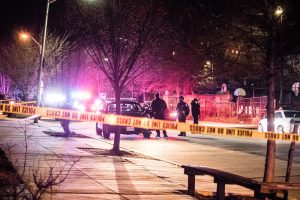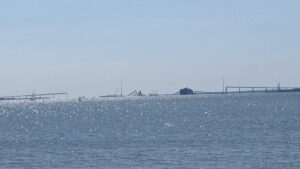As North Korea continues to flex its nuclear muscle, a New York Times front page story today calls the potential confrontation with the United States “the Cuban missile crisis in slow motion.”
Some of us are old enough to remember that crisis and do not wish to revisit such national anxiety ever again.
In that autumn of 1962, President John F. Kennedy and Russia’s Nikita Khrushchev spent 13 days eyeball to eyeball.
This time, North Korea’s Kim Jong-un, heir to a family political dynasty, plays out a nuclear card that’s been developing across multiple years and multiple presidents. Some of us can remember President Kennedy on national TV that week, looking far older than his years, pouches under his eyes signaling sleepless nights and nervous days, warning the Soviets to remove their missiles from Cuba, or else…
Or else what?
The end of the world was too much to imagine – and yet, that’s what we were facing on that Friday morning 55 years ago.
I was a senior at City College, taking the old Baltimore Transit Co. bus cross-town from Northwest Baltimore with a bunch of classmates. When we looked up, we saw placards just above the bus windows. There was Khrushchev, pounding his fist, as he had at the United Nations, declaring, “We will bury you.”
Every conversation on that bus was the same: Was today the end of the world itself?
And if so, why were we spending it in school?
So we covered our anxieties with graveyard humor. In those days, City College was all male. Directly across the street was Eastern High School, all-female.
“What are you gonna do if we hear the Russian bombers are on their way to Baltimore?” went the constant question.
And always, the answer was the same. “I don’t know about you, man, but I’m going over to Eastern.”
Nobody needed an explanation.
The Russians had been given a morning deadline to begin removing their missiles. I forged a pass to get out of my first-period history class – what was the point of studying history if all history was about to end? – and two classmates, David Feigin and Jerry Solomon, joined me and we went down to the offices of the school newspaper, The Collegian.
Solomon had a transistor radio. We huddled in the newspaper office and turned on WCAO, which almost every teenager in Baltimore listened to back in those days, and waited to hear the end of the world come over the radio.
First, there was static. Had the Russians begun blowing up radio stations? Then, an instant later, came the sound of Little Richard, singing, “Havin’ me some fun tonight.”
“If they’re playing music,” I said, “it means we’re not at war.”
“Damn,” Solomon said. “It means we gotta go back to class.”
Today, we all hope for the same kind of happy ending to our newest nuclear confrontation.
Top photo: President Kennedy addresses the nation in 1962. (Photo courtesy James Vaughan, Flickr)
 A former Baltimore Sun columnist and WJZ-TV commentator, Michael Olesker is the author of six books, most recently “Front Stoops in the Fifties: Baltimore Legends Come of Age” (Johns Hopkins University Press).
A former Baltimore Sun columnist and WJZ-TV commentator, Michael Olesker is the author of six books, most recently “Front Stoops in the Fifties: Baltimore Legends Come of Age” (Johns Hopkins University Press).





